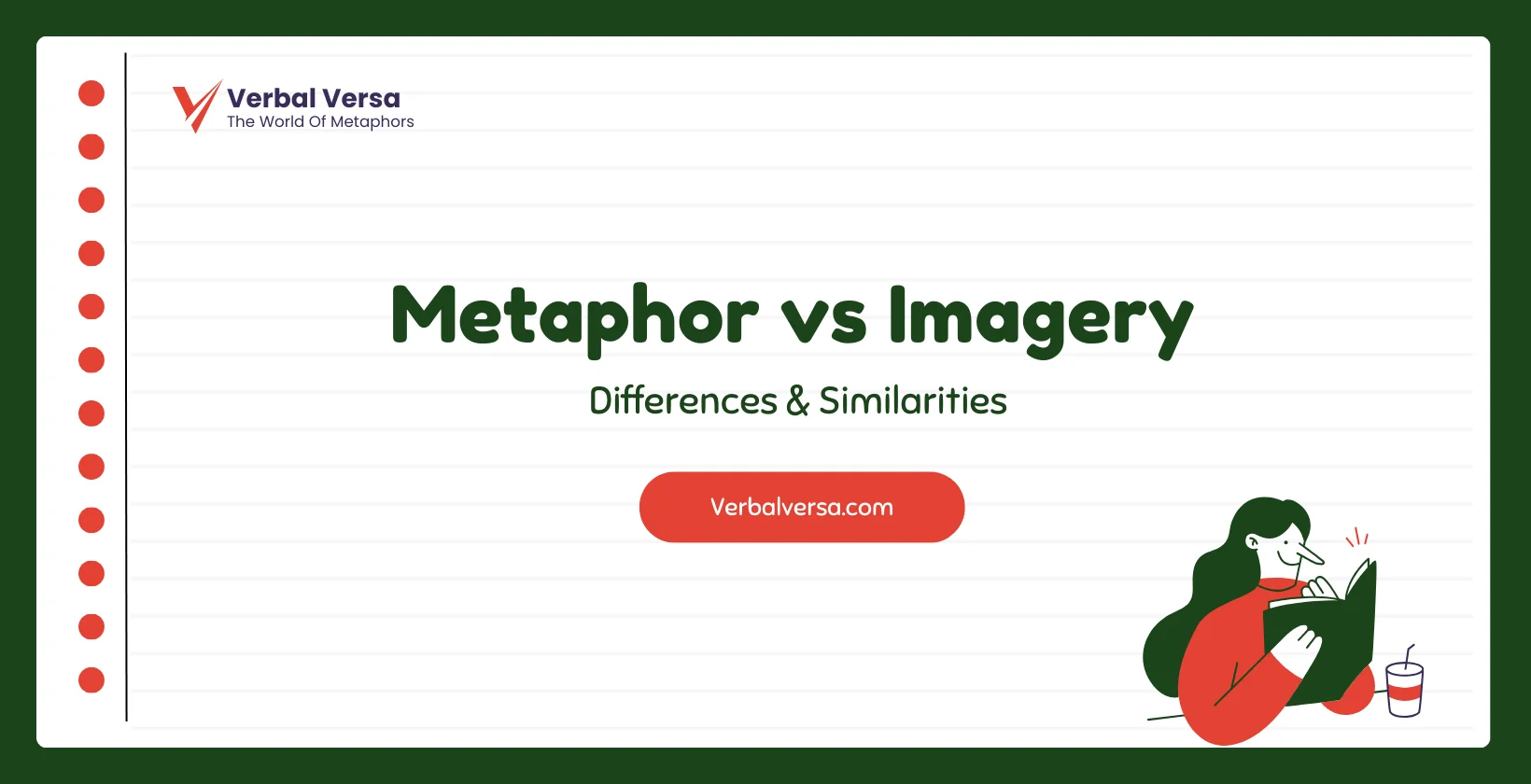A metaphor is a figure of speech that directly compares two unrelated things by stating that one thing is another. Imagery is the use of descriptive language to create mental pictures or sensory experiences like sight, sound, touch, taste, and smell in the mind of the reader.
For Example:
Metaphor: “She’s a diamond in the rough.”
Imagery: The diamond sparkled in the sunlight, casting colorful prisms all around.”
I found both literary devices used in literature commonly used in poetry and poems.Normally one thing I realize is that these differences are most difficult to understand for kids like ks2 or ks3 because they create imagination. But after reading these differences and similarities i hope you understand whatever you are children,writer or adult student etc.
What is Metaphor?
A metaphor is the figure of speech that has directly compared two unlike things instead of indirect. I am taking example from Novel by Harper Lee “To Kill a Mockingbird,”
Atticus Finch compares courage to “knowing you’re licked before you begin but you begin anyway.” This implies that courage means facing challenges despite knowing the odds.:
What is Imagery?
Imagery is a literary device that uses colorful descriptions to evoke sensory experiences in the reader’s mind. It appeals to our five senses (sight, sound, smell, taste, and touch) to create mental images, feelings, and sensations.
For Example:
In “The Great Gatsby,” F. Scott Fitzgerald describes Gatsby’s mansion as
“a colossal affair by any standard.” This image evokes the grandeur and excess of Gatsby’s lifestyle.
What Are The Differences Between Metaphor vs Imagery?
| Metaphor | Personification |
| Compares two unlike things | Appeals to senses, creates mental pictures |
| Uses descriptive language | Directly states one thing is another, |
| Enhances visualization and sensory experience, | Creates deeper understanding, |
| it is a single word, phrase, sentence, | Usually a phrase or sentence, |
What are metaphor vs imagery examples in literature?
Metaphor and imagery are most commonly used in literature. Here are 2 examples of both metaphor and personification from literature:
Metaphor: In “The Old Man and the Sea” by Ernest Hemingway, the old man’s struggle with the marlin is a metaphor for the human condition, representing persistence and strength in the face of challenges.
Imagery: In “Alice’s Adventures in Wonderland” by Lewis Carroll, the bright descriptions of the fantastical landscapes, such as the Queen’s garden with its talking flowers, create rich imagery that transports readers into the fantastic world of Wonderland.
Metaphor: In William Shakespeare’s “As You Like It,” the famous line “All the world’s a stage” is a metaphor comparing life to a theatrical performance, suggesting that we all play different roles and undergo various stages in life.
Imagery: In J.R.R. Tolkien’s “The Hobbit,” the description of Bilbo Baggins’ cozy hobbit hole, with its round door, plush furniture, and shelves stocked with food, creates vivid imagery of comfort and homeliness.
What are examples of metaphor vs Imagery for kids?
Metaphor:
- The playground was a beehive of activity. (This compares the busy playground to a beehive filled with buzzing bees.)
- The homework was about a mountain I had to climb. (This compares a difficult task to a tall mountain that requires effort to conquer.)
Imagery :
- The fluffy white snowflakes danced in the air. (This appeals to the sense of sight and touch.)
- The sizzling bacon filled the kitchen with a yummy smell. (This appeals to the senses of sound and smell.)
What Are The Similarities Between Metaphor And Imagery?
Metaphor and personification are very similar because both are figures of speech but a little bit different. Here are 4 similarities:
| Metaphor | Imagery |
| Type of Figurative language | Type of Figurative language |
| Literary devices | Literary devices |
| used to create imagery | used to create imagery |
| Found in Poetry and Literature | Found in Poetry and Literature |
How Do You Compare Metaphors, Imagery And Personification?
Metaphors compare two unrelated things directly (e.g., “Time is a thief”), emphasizing symbolic meanings.
Imagery uses vivid descriptions to engage the senses (e.g., “The golden sunset bathed the beach in a warm glow”), creating a visual picture.
For more on the differences between metaphors and personification, see Metaphors vs. Personification.
